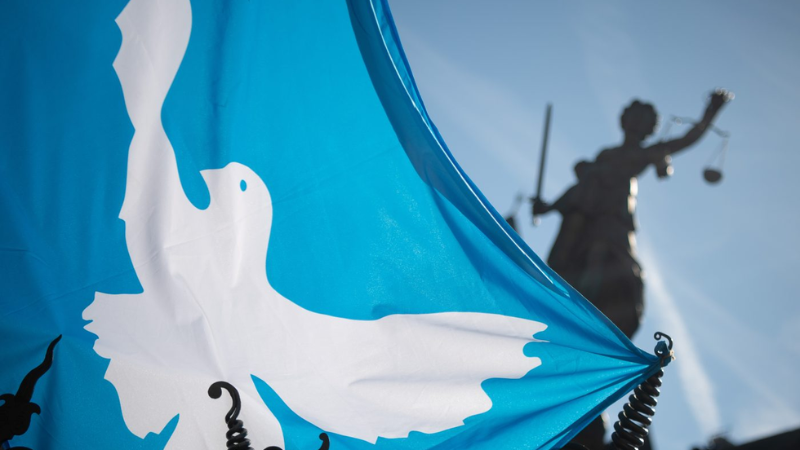
How to Keep the Peace in Ukraine?
By Volodymyr Dubovyk, Visiting Scholar at the Fletcher Russia and Eurasia Program
As talk of possible peace in Ukraine gets louder, a plan to keep it is urgently needed. Where would peacekeepers come from, and what orders would they have?
It’s not just the return of Donald Trump that has increased the prospects of peace talks on Ukraine. The war is total, protracted, and the worst kind of attritional conflict with a huge toll on both sides.
Kyiv’s ability to keep fighting is being harshly tested, while Russia, even with its clear advantage in mass and personnel, is exhausted and can’t sustain its current commitment and casualties indefinitely.
At the same time, some members of the coalition that emerged in 2022 are showing signs of Ukraine fatigue. There is a growing feeling in some Western capitals that a “bad peace” would be better than continuation of a bloody and financially demanding war.
Even so, the most important factor is the change of leadership in Washington, where President Trump has declared his intention to stop the fighting and force some sort of settlement.
The debate on a possible peace is at full throttle, as are the messaging and mind games from all sides. The focus is on a range of issues, among which are territory, security guarantees, and Ukraine’s right to choose its own future — including the option of joining NATO (or not) and the right to maintain adequate armed forces.
One key element of any plan to stop the fighting will be the size and mandate of any outside military force deployed along the frontline.
The idea of having peacekeepers in Donbas was floated briefly and unsuccessfully in the 2014-2022 stage of the war. Ukraine wanted outside forces placed on its border with Russia, while Moscow insisted they should be on the contact line in Donbas, to ensure its gains were frozen in place.
The major difference now is the scale and intensity of the war. There is a much longer contact/conflict line, and the number of troops on both sides has massively increased.
As a result, there would be an immense logistical problem for anyone planning to deploy peacekeepers. The task is not on the same scale as southern Lebanon or Cyprus, to give two well-known examples. It would require a massive force with substantial funding, with no clear sense of when the commitment might end.
Another question is how heavily armed the force should be. This would, of course, be dictated by the objective of the mission, but one thing is clear; the Kremlin will not want anything more than a lightly armed symbolic presence.
On the other side, Ukraine’s interest is in the largest possible force drawn from its allies and funders. This would become a “tripwire” against further incursions onto Ukrainian territory. President Zelenskyy has suggested a force of 200,000 might be needed.
If Russian troops continue to advance, it will increase the Kremlin’s confidence and reduce its appetite for freezing the conflict, and thus for any compromise. If the front line stagnates, a deal may seem more appealing.
The strength of negotiating positions will closely reflect events on the battlefield, something Kyiv has been trying to convey to its allies. It argues that the best way to achieve a strong negotiating position is to send more arms.
Another question is the mandate of any peacekeeping force. Would it receive its authority from an international organization? If so, much will depend on which one.
Could it be the United Nations, the European Union, EU-plus, or NATO? This would not be a traditional peacekeeping operation and no one other than the Transatlantic alliance is really capable of taking it on. The Kremlin won’t like this, but no one else could credibly perform the role.
There’s little point in a force that lacks teeth. The Organization for Security and Cooperation in Europe (OSCE) deployed a monitoring force in Donbas for years, to little effect. Russia respects strength and it will test any military grouping that is deployed, possibly the moment it arrives.
The Trump administration wants Europe to take far more responsibility for European security and this would include a future force in Ukraine. The president will not deploy US ground forces.
In their absence, the only realistic alternative is European NATO, probably led by the French and British. The two leading European military powers have reportedly been discussing the issue, but it is unlikely either would agree without a promise of US air support to make their deployment credible.
Others are likely to rule out involvement. Germany’s Chancellor Olaf Scholz has rejected the idea (though his Green party foreign minister was more considered) and Poland has also said it will not send troops. Both are major land powers and it would be hard to make up the numbers without them.
It may seem premature to talk about peace now, as hostilities rage at the frontline, but preparation is nonetheless vital. If and when the moment arrives for a meaningful peace process, there will be a need for absolute clarity on who is ready to play their part.
(This post is republished from CEPA.)
